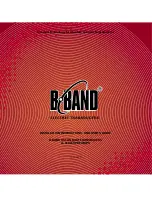
Modes
These systems allow silently monitoring until a call
directed to you is received, and offer privacy on an
otherwise busy channel.
-
-
-
CTCSS Tone Squelch
. - - . - . - - . . - - - - _ I -
Note CTCSS
decode
(tone squelch) operation re-
quires the optional FTT-12 keypad, and
cannot
be selected until the unit is installed.
CTCSS am
on
Tone Coded Squelch System)
This imposes a continuous, subaudible tone on your
transmitted audio. When decoded at the other sta-
tion, this allows their squelch to open and receive
your
transmission. Some “closed” repeaters use this
to limit access, or to prevent signals intended for
other repeaters (with the same input frequency) in
fringe areas from locking up the repeater. There are
39 selectable CTCSS tones.
DCS
(Digital Coded Squelch)
DCS operation modulates a subaudible tone accord-
ing to a digital protocol (continuous
synchro-
nous code). DCS is widely used in the commercial
land-mobile industry for its high performance and
104 codes (offers greater privacy than CTCSS).
To use either CTCSS or DCS, both stations must be
on the same frequency, and have selected the same
CTCSS tone or DCS code.
To activate CTCSS or DCS operation, press
(encode) appears when the CTCSS tone gener-
ator is activated for transmission only.
(encode decode) appears when the CTCSS
tone squelch is activated for both tx rx (only signals
“encoded” with the matching tone open the squelch).
appears when the digital code squelch system
(tx rx) is active.
To select a CTCSS tone:
Press
as needed, to select
or
opera-
tion. Press
to display the default tone at
the
right
side of the display.
Next, turn the knob to select the desired tone (see
the
table on the next page), then press
to exit.
To select a DCS code:
Press
as needed, to select
operation.
Press
to display the default code at the
side of the display.
Next, turn the knob to select the desired code (see
the table on the next page), then press
to exit.
















































